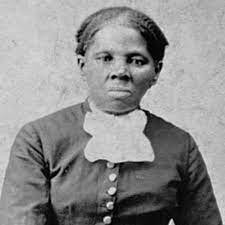BLM at School: International People's With Disabilities Day
/We’re highlighting International People's with Disabilities Day by shining the spotlight on two famous figures who are not generally recognized as part of the disability community: Harriet Tubman and Fannie Lou Hamer. Why leave out this part of their identity in our shared stories of them? It's important to see a person’s full life, celebrate their differences, and learn from their challenges and accomplishments.
Harriet Tubman
Known as the “Moses of her people,” Harriet Tubman was born in Maryland around 1820 as an enslaved person. After being struck in the head by a 2-pound weight as a teenager, she experienced narcolepsy, epileptic seizures, and severe headaches for the rest of her life. In 1849 Tubman escaped to Philadelphia and made at least thirteen trips back into Maryland’s slave territory to free 60 to 70 enslaved people. She later freed hundreds more in South Carolina as the leader of an armed expedition for the Union Army. Tubman was skilled as a scout, soldier, spy, and nurse, serving as the first Black woman in the U.S. military.
Fannie Lou Hamer
Born in 1917, the youngest of twenty children to sharecroppers in the Mississippi Delta, Fannie Lou Hamer later raised her own family not far away, working in plantation fields and serving as timekeeper to the plantation owner. In 1962, she went with a small group of volunteers from the Student Nonviolent Coordinating Committee (SNCC) to register to vote, but failed an unfair literacy test given by courthouse officials, though she could read and write. When she returned home, the plantation owner was angry because he did not think Black people should have the right to vote. He fired her and made her leave her home of 18 years. SNCC leaders asked Hamer to work as a field organizer, visiting people in her community, teaching them to read, and encouraging them to learn about their voting rights. The next year, Hamer was on her way home from a training program with co-workers when the bus stopped at a lunch counter. The white server refused to serve them, though segregated rest stops were illegal. Police arrested the group, took them to jail for days, and brutally beat them. Hamer was permanently injured afterwards; her sight was weakened, her kidneys suffered damage, and the limp she’d had since childhood polio worsened. Despite these disabilities, she remained determined to push for political change. In 1964, Hamer helped found the Mississippi Freedom Democratic Party, providing representation for the state’s Black people. Hamer gave important speeches and sang at civil rights meetings, inspiring Black people to run for political office. She helped Black people register to vote, protested police brutality, and increased awareness of racial discrimination. She did not let fear stop her from fighting for what she believed in.
What can you do and how can you learn more?
If you have four minutes, watch Smithsonian Channel - Fannie Lou Hamer Risked Her Life for the Right to Vote
If you have five minutes, watch TED-Ed - The Breathtaking Courage of Harriet Tubman, by Janell Hobson.
Dig deeper with these resources:
Disability Visibility Project: blog and podcast by people with disabilities from many professions
Rooted in Rights: blog and storyteller videos intended to amplify the perspectives of the disability community
Check out some books from the Seattle Public Library:
Harriet Tubman: Freedom Fighter by Nadia L. Hohn (Ages 4-8 yrs)
Fannie Lou Hamer: Civil Rights Activist by Duchess Harris (Ages 7-11 yrs)
Social Justice Book list on Disability (all ages)
Seattle Public Library Deaf Awareness Book list (all ages)




